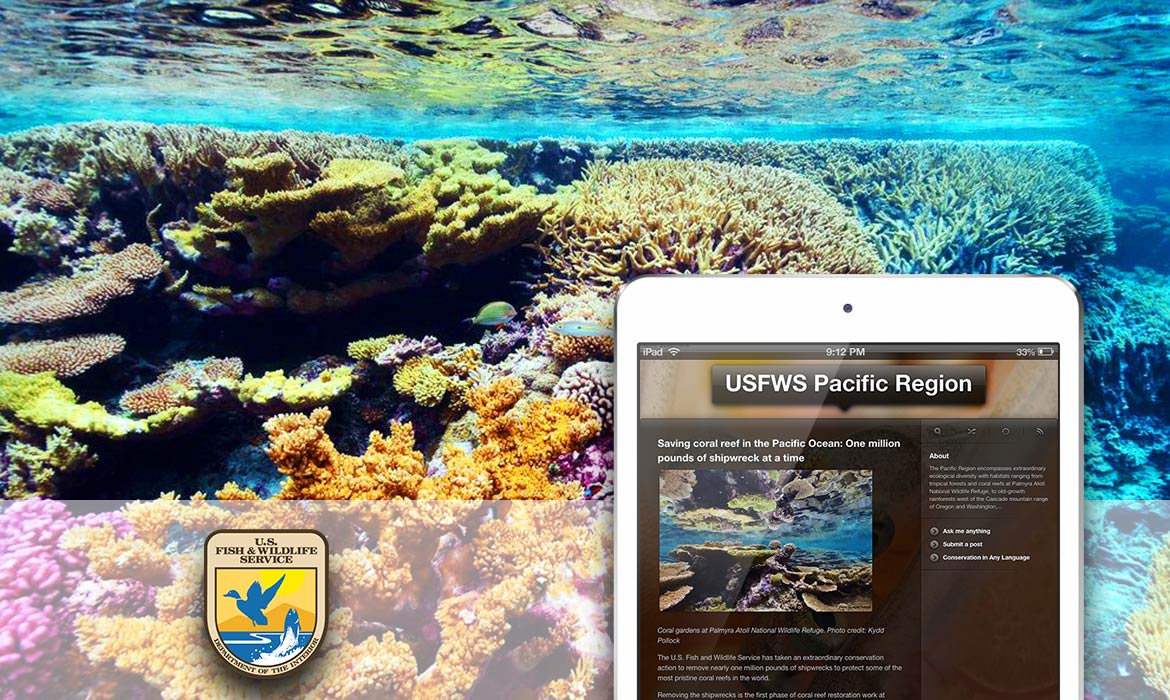
Press
Shipwrecks Removed From Protected Coral Reefs
The U.S. Fish and Wildlife Service has taken an extraordinary conservation action to remove nearly one million pounds of shipwrecks to protect some of the most pristine coral reefs in the world.
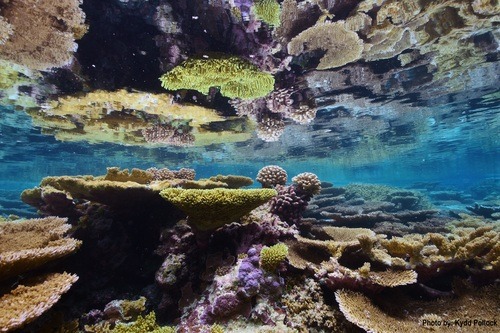
Coral gardens at Palmyra Atoll National Wildlife Refuge. Photo credit: Kydd Pollock
Removing the shipwrecks is the first phase of coral reef restoration work at Palmyra Atoll and Kingman Reef National Wildlife Refuges. The two isolated refuges are located 1,000 miles south of Honolulu and are part of the Pacific Remote Islands Marine National Monument.
The iron in the shipwrecks on these remote atolls was fueling the growth of invasive organisms—corallimorph at Palmyra Refuge and a filamentous algae at Kingman Refuge—that smothered a large amount of once-healthy, diverse coral.
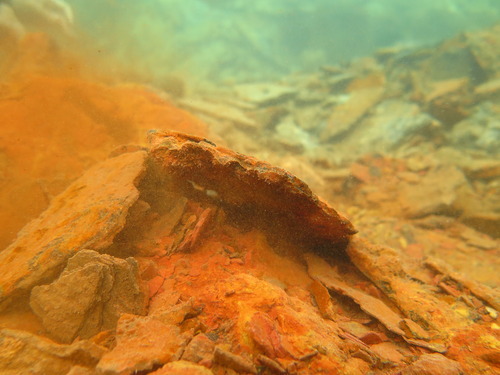
A shipwreck on Palmyra Atoll NWR had disintegrated into fine shale-like pieces of rust and fluff in some areas, so most of the debris were shoveled by hand and carted away in buckets. Photo Credit: Susan White/USFWS.
This is known as “black reef”—a phenomenon in which a reef with high coral diversity transforms into a brown or black reef dominated by a single, invasive species. The next steps in restoring the reef are to halt the progression of black reef by removing the corallimorph and filamentous algae at the wreck sites.
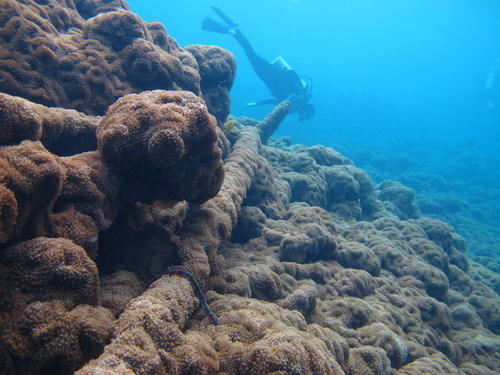
A carpet of the invasive corallimorph that is gaining nutrients from the wreck’s iron. The diver in the background serves as a size scale. Photo credit: Susan White/USFWS
“With this reef restoration project, we are delivering on the conservation promise of these Refuges and the Monument,” explains Susan White, Monument Superintendent and Refuge Project Leader. “Studies showed the proliferation of black reef at the Refuges and linked it to the shipwrecks. As Refuge Managers, we applied those findings in a targeted reef restoration effort involving the removal of the shipwrecks, the removal of invasive species, and the restoration of vital coral reef habitat.”
To accomplish this complex shipwreck removal project, the Service contracted the marine salvage expertise of Global Diving and Salvage of Seattle, Washington and Curtin Maritime of Long Beach, California, and collaborated with multiple federal partner agencies and The Nature Conservancy.
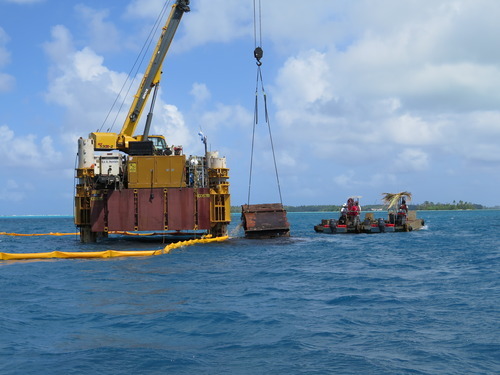
The barge platform provided surface control for the divers and had a large crane to lift the large pieces of wreck out of the water and on to the shallow water transport vessel “scow”. Photo credit: Susan White/USFWS
The Nature Conservancy owns the largest island at Palmyra and operates a research station there in conjunction with the Service and the Palmyra Atoll Research Consortium. The Consortium as well as the Washington D.C.-based Marine Conservation Institute and others have long advocated for the removal of the shipwrecks.
With the shipwrecks gone, the otherwise very healthy reefs will have the opportunity to recover from the onslaught of added nutrients and the explosion of invasive corallimorph and filamentous algae.
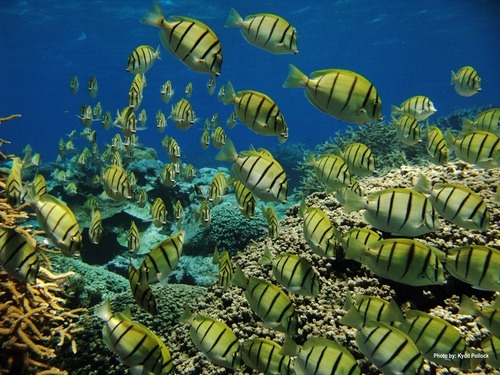
A school of manini at Kingman Reef NWR. Photo credit: Kidd Pollock
“Due to their isolation and protected status, the reefs of Palmyra Atoll and Kingman Reef Refuges are healthy and resilient, and experience few manmade stressors besides these wrecks,” explained Palmyra Atoll and Kingman Reef Refuge Manager Amanda Pollock. “By removing the wrecks and invasive species, the Service is giving these reefs the best chance to adapt to global climate and oceanographic changes.”
Throughout the restoration project, scientists and refuge managers will continue to monitor the status and health of the reef ecosystems.
Link to Online Article: http://usfwspacific.tumblr.com/post/74962219815/saving-coral-reef-in-the-pacific-ocean-one-million


